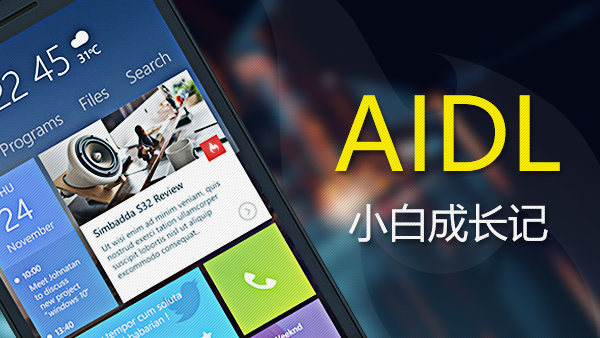CacheInterceptor
介绍完缓存之后,现在开始介绍缓存拦截器CacheInterceptor了,同样也是查看其intercept()方法,这里边上片段代码边解析,化整为零:
@Override public Response intercept(Chain chain) throws IOException {
Response cacheCandidate = cache != null
? cache.get(chain.request())
: null;
...
}
首先通过判断缓存对象是否为null,如果不为null则根据传入的Chain对象的request获取缓存的Response。
@Override public Response intercept(Chain chain) throws IOException {
...
CacheStrategy strategy = new CacheStrategy.Factory(now, chain.request(), cacheCandidate).get();
Request networkRequest = strategy.networkRequest;
Response cacheResponse = strategy.cacheResponse;
...
}
创建缓存策略对象CacheStrategy,CacheStrategy内部维护了一个Request和一个Response,该类主要是用于解决到底使用网络还是缓存,亦或是两者皆用:
/** 如果不使用网络,则 networkRequest为 null */
public final @Nullable Request networkRequest;
/** 如果不使用缓存,则 cacheResponse为 null */
public final @Nullable Response cacheResponse;
关于缓存策略的创建,我们查看CacheStrategy的内部类Factory的get()方法:
public CacheStrategy get() {
CacheStrategy candidate = getCandidate();
if (candidate.networkRequest != null && request.cacheControl().onlyIfCached()) {
// We're forbidden from using the network and the cache is insufficient.
return new CacheStrategy(null, null);
}
return candidate;
}
该方法比较简单,创建CacheStrategy的主要的逻辑是在getCandidate()方法中:
private CacheStrategy getCandidate() {
//找不到缓存,需要网络请求
if (cacheResponse == null) {
return new CacheStrategy(request, null);
}
// 如果是https请求且缺少握手操作,需要网络请求
if (request.isHttps() && cacheResponse.handshake() == null) {
return new CacheStrategy(request, null);
}
// 判断网络请求该不该缓存下来,不该缓存则,需要网络请求
if (!isCacheable(cacheResponse, request)) {
return new CacheStrategy(request, null);
}
// 如果指定不缓存或者是可选择的请求,需要网络请求
CacheControl requestCaching = request.cacheControl();
if (requestCaching.noCache() || hasConditions(request)) {
return new CacheStrategy(request, null);
}
//上述需要网络请求返回的 CacheStrategy 第一个参数传入request
//如果缓存是不受影响的,CacheStrategy传入cacheResponse
CacheControl responseCaching = cacheResponse.cacheControl();
if (responseCaching.immutable()) {
return new CacheStrategy(null, cacheResponse);
}
//可以缓存,添加请求头信息
if (!responseCaching.noCache() && ageMillis + minFreshMillis < freshMillis + maxStaleMillis) {
Response.Builder builder = cacheResponse.newBuilder();
if (ageMillis + minFreshMillis >= freshMillis) {
builder.addHeader("Warning", "110 HttpURLConnection \"Response is stale\"");
}
long oneDayMillis = 24 * 60 * 60 * 1000L;
if (ageMillis > oneDayMillis && isFreshnessLifetimeHeuristic()) {
builder.addHeader("Warning", "113 HttpURLConnection \"Heuristic expiration\"");
}
return new CacheStrategy(null, builder.build());
}
...
}
介绍完CacheStrategy对象和创建CacheStrategy的过程后,接着分析intercept()方法:
@Override public Response intercept(Chain chain) throws IOException {
...
//如果有缓存,更新统计指标, 增加命中率
if (cache != null) {
cache.trackResponse(strategy);
}
...
//如果当前没有网络且找不到缓存
if (networkRequest == null && cacheResponse == null) {
return new Response.Builder()
.request(chain.request())
.protocol(Protocol.HTTP_1_1)
.code(504)
.message("Unsatisfiable Request (only-if-cached)")
.body(Util.EMPTY_RESPONSE)
.sentRequestAtMillis(-1L)
.receivedResponseAtMillis(System.currentTimeMillis())
.build();
}
...
}
如果有缓存,通过调用CacheStrategy的trackResponse()方法更新统计指标, 更新网络请求数和命中缓存数;
接着通过判断CacheStrategy的networkRequest和cacheResponse,如果二者同时为null,即当前没有网络且没有缓存,则构造一个Response对象并返回,其中状态码为504,并设置了提示的message信息。
接着分析:
@Override public Response intercept(Chain chain) throws IOException {
...
//如果不使用网络请求,直接返回缓存的Response
if (networkRequest == null) {
return cacheResponse.newBuilder()
.cacheResponse(stripBody(cacheResponse))
.build();
}
//调用下一个拦截器进行处理
Response networkResponse = null;
try {
networkResponse = chain.proceed(networkRequest);
} finally {
// If we're crashing on I/O or otherwise, don't leak the cache body.
if (networkResponse == null && cacheCandidate != null) {
closeQuietly(cacheCandidate.body());
}
}
//本地有缓存
if (cacheResponse != null) {
//服务器返回状态码为HTTP_NOT_MODIFIED(304)
if (networkResponse.code() == HTTP_NOT_MODIFIED) {
//使用缓存数据
Response response = cacheResponse.newBuilder()
...
.build();
...
} else {
closeQuietly(cacheResponse.body());
}
}
//如果服务器资源已经修改,使用网络响应返回的最新数据
Response response = networkResponse.newBuilder()
.cacheResponse(stripBody(cacheResponse))
.networkResponse(stripBody(networkResponse))
.build();
//如果有缓存
if (cache != null) {
//htpp 头部有响应体且需要缓存
if (HttpHeaders.hasBody(response) && CacheStrategy.isCacheable(response, networkRequest)) {
CacheRequest cacheRequest = cache.put(response);
return cacheWritingResponse(cacheRequest, response);
}
//请求方法不符合能够缓存
if (HttpMethod.invalidatesCache(networkRequest.method())) {
try {
//移除对应的request
cache.remove(networkRequest);
} catch (IOException ignored) {
}
}
}
return response;
}
当服务器返回状态码为HTTP_NOT_MODIFIED即304时,说明缓存还没过期或服务器资源没修改,此时返回缓存;如果服务器资源修改了,则使用网络响应返回的最新数据构造Response,接着将最新的数据缓存并移除无效的缓存。
总结CacheInterceptor主要做的操作:
- 从缓存中获取Reponse对象,赋值给caceResponse,如果找不到缓存则为null;
- 根据当前请求request和caceResponse 构建一个CacheStrategy对象;
- CacheStrategy这个策略对象将根据相关规则来决定cacheResponse和Request是否有效,如果无效则分别将cacheResponse和request设置为null;
- 如果request和cacheResponse都为null,即没有网络且没有缓存,直接返回一个状态码为504的空Respone对象;
- 如果resquest为null而cacheResponse不为null,即没有网络且有缓存,则直接返回cacheResponse对象;
- 执行下一个拦截器的intercept()方法进行网络请求,获取response;
- 如果服务器资源没有过期(状态码304)且存在缓存,则返回缓存;
- 如果服务器资源有修改,则将返回的最新数据进行缓存并移除掉无效的缓存,最后返回response对象给上一个拦截器。
下一篇将讲解五大拦截器中的最后两个拦截器, ConnectInterceptor和CallServerInterceptor,感兴趣的朋友可以继续阅读:

 随时随地看视频
随时随地看视频




